
Philip Anthony Treacy is an Irish haute couture milliner, or hat designer, who has been mostly based in London for his career, and who was described by Vogue magazine as "perhaps the greatest living milliner". In 2000, Treacy became the first milliner in eighty years to be invited to exhibit at the Paris haute couture fashion shows. He has won British Accessory Designer of the Year at the British Fashion Awards five times, and has received public honours in both Britain and Ireland. His designs have been displayed at the Victoria and Albert Museum and the Metropolitan Museum of Art.

Lilly Daché was a French-born American milliner and fashion merchandiser. She started her career in a small bonnet shop, advanced to being a sales lady at Macy's department store, and from there started her own hat business. She was at the peak of her business career in the 1930s and 1940s. Her contributions to millinery were well-known custom-designed fashion hats for wealthy women, celebrities, socialites, and movie stars. Her hats cost about ten times the average cost of a lady's hat. Her main hat business was in New York City with branches in Paris. Later in her career she expanded her fashion line to include dresses, perfume, and jewelry.

A hat is a head covering which is worn for various reasons, including protection against weather conditions, ceremonial reasons such as university graduation, religious reasons, safety, or as a fashion accessory. Hats which incorporate mechanical features, such as visors, spikes, flaps, braces or beer holders shade into the broader category of headgear.

Bonnet has been used as the name for a wide variety of headgear for both sexes—more often female—from the Middle Ages to the present. As with "hat" and "cap", it is impossible to generalize as to the styles for which the word has been used, but there is for both sexes a tendency to use the word for styles in soft material and lacking a brim, or at least one all the way round, rather than just at the front. Yet the term has also been used, for example, for steel helmets. This was from Scotland, where the term has long been especially popular.
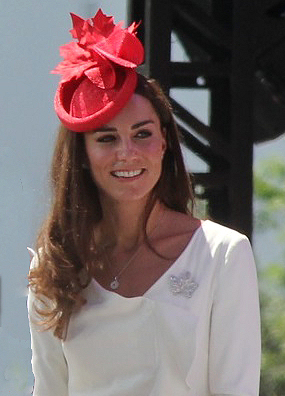
A fascinator is a formal headpiece, a style of millinery. Since the 1990s, the term has referred to a type of formal headwear worn as an alternative to the hat; it is usually a large decorative design attached to a band or clip. In contrast to a hat, its function is purely ornamental: it covers very little of the head and offers little or no protection from the weather. An intermediate form, incorporating a more substantial base to resemble a hat, is sometimes called a hatinator.
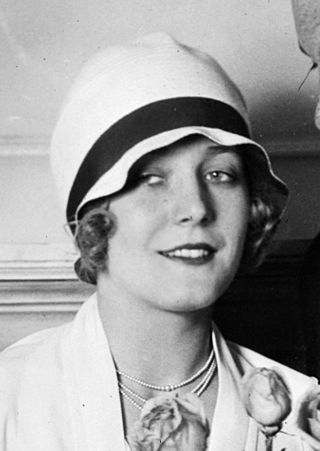
The cloche hat or simply cloche is a fitted, bell-shaped hat for women that was invented in 1908 by milliner Caroline Reboux. They were especially popular from about 1922 to 1933. Its name is derived from cloche, the French word for "bell".

Caroline Reboux was a Parisian milliner and French fashion designer. She opened her first boutique at 23 rue de la paix in Paris in 1865, which she continued to operate throughout her life. Reboux opened other shops in Paris and London starting in 1870. She trained other milliners who became famous in their own right, including American milliner Lilly Daché and French milliner Rose Valois. Reboux's most famous shop was located at 9 Avenue Matignon in Paris, which carried on operating after her death for almost three decades under the direction of Lucienne Rabaté known as "Mademoiselle Lucienne" the most famous parisian milliner at that time.
Prudence Millinery designs and makes couture hats for major designers all over the world.

Stephen Jones OBE is a British milliner based in London, who is considered one of the most radical and important milliners of the late 20th and early 21st centuries. He is also one of the most prolific, having created hats for the catwalk shows of many leading couturiers and fashion designers, such as John Galliano at Dior and Vivienne Westwood. His work is known for its inventiveness and high level of technical expertise. Jones co-curated the 2009 exhibition Hats: An Anthology for the Victoria and Albert Museum.

John Richardson Boyd MBE was a Scottish milliner based in London. Designing hats for over seventy-five years, Boyd was one of London's most respected milliners and is known for his creations for Diana, Princess of Wales and Anne, Princess Royal. Boyd was a milliner to three generations of Diana's family – Diana, her mother Frances Shand Kydd and grandmother Ruth Roche, Baroness Fermoy – and had remained at the centre of his craft adding another generation of royals with Catherine, Duchess of Cambridge. Boyd had one of the longest millinery careers in the world whilst continuing to practise his art before his death in 2018. Boyd’s label continues with his protégé and senior milliner Sarah Marshall.

A draped turban or turban hat is a millinery design in which fabric is draped to create headwear closely moulded to the head. Sometimes it may be stiffened or padded, although simpler versions may just comprise wound fabric that is knotted or stitched. It may include a peak, feather or other details to add height. It generally covers most or all of the hair.

A halo hat is a millinery design in which the headgear acts as a circular frame for the face, creating a halo effect. The design is said to date back to the late 19th century, when it was known as the aureole hat; this name is sometimes still used. It may also be known as the angel hat or bambini – the latter said to derive from Italian for terracotta plaques depicting the infant Christ.
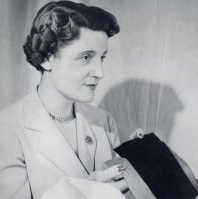
For the French general and diplomat, see Claude Carra Saint-Cyr
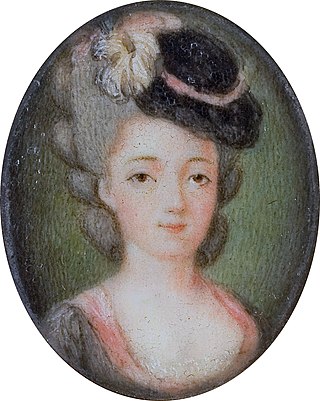
A doll hat is a women's millinery design scaled down to suggest a hat that could be worn by a doll. It can be of any design and is generally worn at the front of the head. The hat is usually held in place with a band of fabric or elastic secured at the back of the head.

A mushroom hat is a millinery style in which the brim of the hat tilts downwards, resembling the shape of a mushroom. It is a style that first emerged in the 1870s and 1880s, when it was usually made of straw. It became fashionable again from around 1907 to the late 1920s; these versions featured a distinctly downturned brim although the size and shape of the crown varied according to prevailing fashions.

A peach basket hat is a millinery design that resembles an upturned country basket of the style typically used to collect fruit. Generally it is made of straw or similar material and it often has a trimming of flowers and ribbons. Some models may also feature a veil or draped fabric covering. It was introduced in around 1908 and caused some controversy over the succeeding year due to its extreme dimensions and decorations. It had revivals – designs were at this stage more modest – in the 1930s and 1950s.

A bumper brim is a millinery feature in which the hat brim is tubular in design, making it a prominent feature of the hat. In order to achieve this effect, the brim may be rolled, stiffened or padded. A bumper brim can be added to a variety of hat designs, from small to large.

A coal scuttle bonnet is a design of bonnet with stiffened brim and a flat back (crown). The name originates from its similarity to the shape of a traditional coal storer. It may be very similar in design to the poke bonnet – some sources use the terms interchangeably – however the poke shape had a wide and rounded front brim that extended beyond the face, according to fashion historian Mary Brooks Picken, while the Metropolitan Museum of Art notes that the poke generally shielded the face and had a wide brim that provided a large surface for decoration.
Adolfo Faustino Sardiña, professionally known as Adolfo, was a Cuban-born American fashion designer who started out as a milliner in the 1950s. While chief designer for the wholesale milliners Emme, he won the Coty Award and the Neiman Marcus Fashion Award. In 1963 he set up his own salon in New York, firstly as a milliner, and then focusing on clothing. He retired from fashion design in 1993.
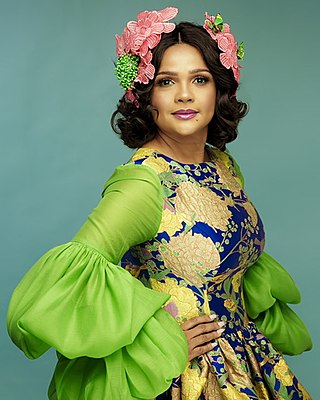
Velma Owusu-Bempah is a milliner, accessories designer and fashion instructor from Ghana. She is the Creative director of her self-named fashion brand, Velma's Millinery and Accessories, and the principal of Velma's Millinery Academy.



















